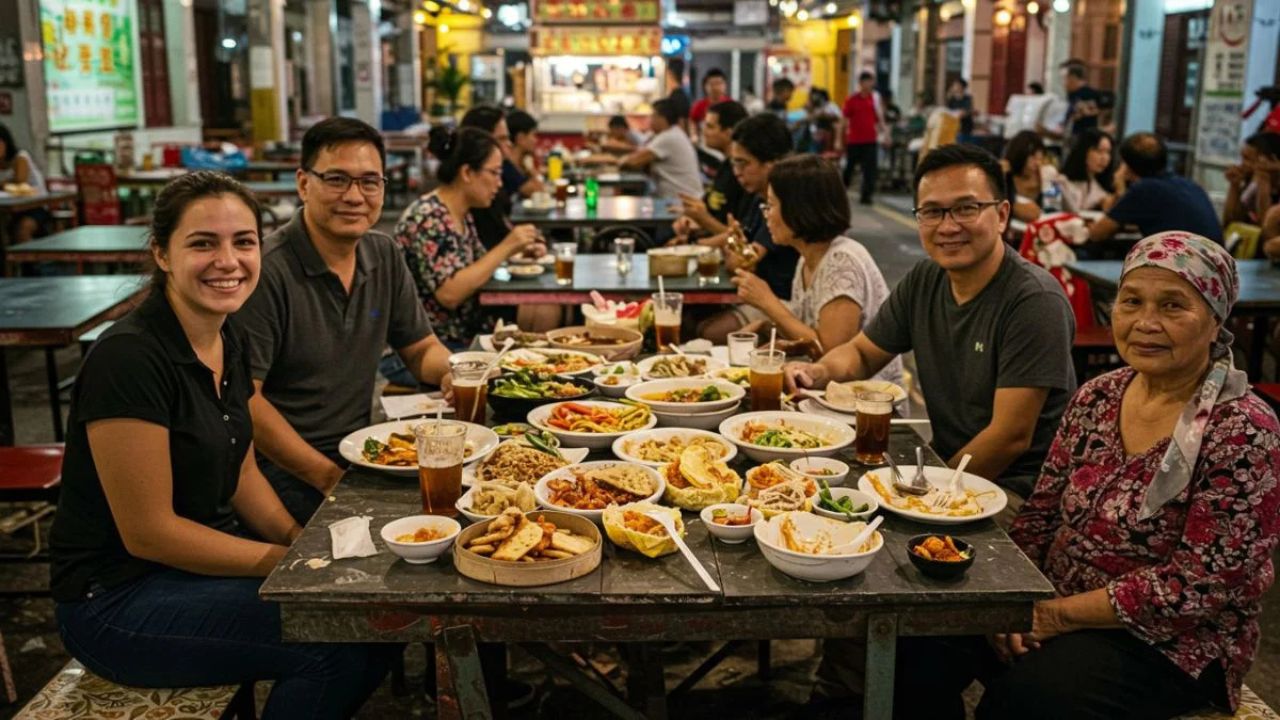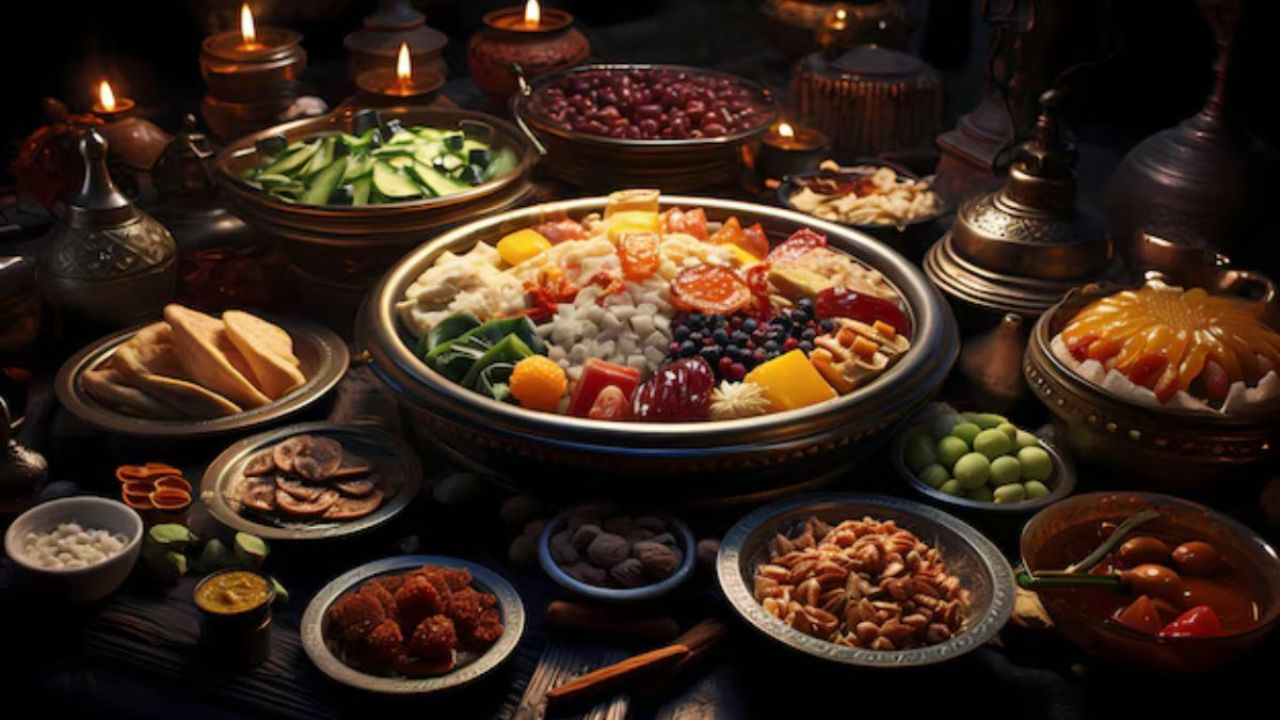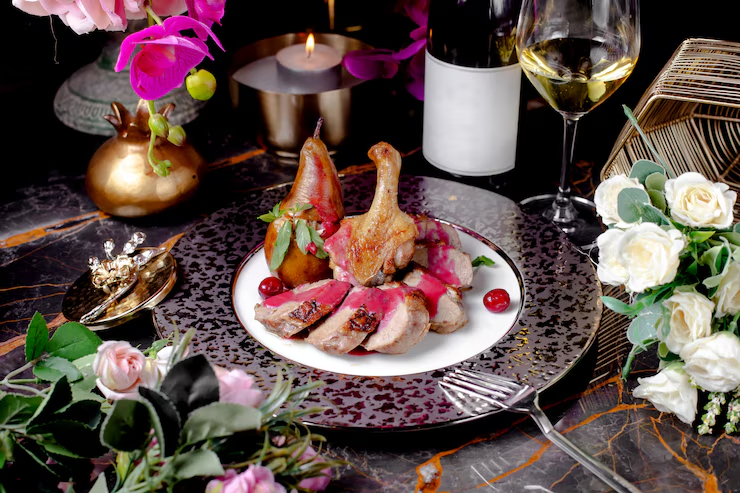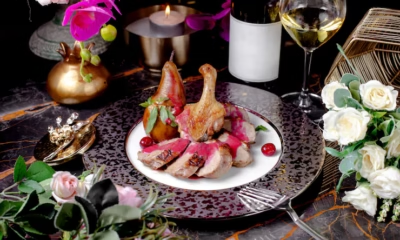Food
Chinatown Hawker Leftovers Consumption: Culture, Survival, and Ethics

In the heart of many bustling cities across Asia, Chinatown hawker leftovers consumption has quietly persisted as a controversial and complex topic. This practice — where uneaten food from hawker stalls is collected and consumed — brings up questions surrounding food waste, poverty, tradition, and public health. While the concept might seem shocking to some, for others it represents survival, sustainability, or even resourcefulness in the face of rising living costs.
Let’s dive deeper into the reasons behind the consumption of Chinatown hawker leftovers, and understand the layers of this phenomenon from cultural, social, environmental, and ethical perspectives.
The Reality Behind Chinatown Hawker Leftovers Consumption
Hawker centers are famous for serving affordable and delicious meals to the masses. However, the leftover food discarded at the end of each day often doesn’t go to waste. In some Chinatown districts, these leftovers find their way back into consumption, either through scavengers, repurposing, or charitable redistribution.
A Hidden Survival Mechanism
For low-income individuals, especially the elderly or homeless, Chinatown hawker leftovers consumption may be the only accessible means of getting a meal. In cities with growing inequality, these leftovers become lifelines.
Not Always Desperation — Sometimes a Choice
Interestingly, not all who consume hawker leftovers do so out of absolute necessity. Some may view it as a protest against food waste, or as part of a frugal lifestyle. This choice, though often judged harshly, points to the growing sustainability movement that sees value in what others discard.
Cultural and Historical Context
Respect for Food in Asian Culture
In many Asian cultures, wasting food is frowned upon. “Every grain of rice is sacred,” as many elders might say. The idea of reusing or finishing leftovers stems from deep-rooted cultural respect toward food.
From War-Torn Scarcity to Urban Resourcefulness
Historically, periods of war and poverty ingrained habits of food preservation and reuse. In places like Chinatown, where communities thrived through self-reliance, hawker leftovers consumption isn’t new — it has simply evolved with urbanization.
Environmental Implications of Food Waste
Globally, nearly one-third of all food produced is wasted. In that context, Chinatown hawker leftovers consumption plays an unexpected role in reducing food waste and minimizing environmental strain.
Reducing Landfill Contribution
Food scraps from hawker stalls often end up in landfills, generating methane and contributing to pollution. Consumption of leftovers — when safe and appropriate — can reduce this impact.
A Form of Urban Recycling
In a way, consuming hawker leftovers mirrors urban recycling: it’s the reallocation of resources within a city. It highlights how every bit of food still holds value.
Public Health and Safety Concerns
While some see the reuse of leftovers as practical or eco-friendly, others raise serious concerns.
Potential Risks of Foodborne Illnesses
Without proper refrigeration or reheating, leftover food can harbor bacteria such as Salmonella or E. coli. Public health authorities often warn against consuming leftovers that have not been safely handled.
No Oversight or Regulation
Unlike formal food redistribution programs, the informal nature of Chinatown hawker leftovers consumption means there’s no regulation, no quality checks, and thus, higher risk for contamination.
Hygiene Practices Among Hawkers and Scavengers
Some Hawkers Take Initiative
To counter the risk, some hawker stall owners voluntarily store untouched, clean food in containers for later distribution to the needy — a gesture that brings dignity and hygiene into the process.
Scavengers and Their Methods
Some individuals who collect these leftovers are surprisingly methodical — selecting only untouched, packaged, or covered food. Their experience teaches them how to discern safer options.
Social Stigma and Ethical Considerations
Shame and Secrecy
Those who consume leftovers often do so in secrecy. Social stigma casts them as either desperate or unhygienic, ignoring the systemic issues that drive such behavior.
Judgment vs. Compassion
There’s a fine line between raising health concerns and shaming those in need. Instead of criticism, public discourse could shift toward compassion and support.
Charitable Food Redistribution Efforts
Some Chinatown communities have turned leftovers into opportunities for charity.
Volunteer-Led Redistribution
Groups of volunteers work with hawkers to collect safe-to-eat leftovers and redistribute them to shelters or the homeless. These community-driven efforts uphold food safety while helping the needy.
Legal Hurdles and Liability Fears
Unfortunately, many hawker stall owners hesitate to donate leftovers due to legal fears. Without “GoodSamaritan” laws in some regions, they worry about liability if someone gets sick.
Innovations to Reduce Food Waste
Apps and Platforms for Surplus Food
Technology is bridging the gap. Food waste reduction apps now allow hawkers to list surplus meals for sale at discounted prices, reducing waste and helping budget-conscious consumers.
Scheduled Pickup Programs
Some municipalities have started programs where approved NGOs collect leftovers under strict guidelines. This adds structure to an otherwise informal process.
Voices from the Ground
A Hawker’s Perspective
Many hawkers feel conflicted. On one hand, they hate to see good food wasted; on the other, they fear reputational damage if someone falls ill.
Testimony from a Leftover Consumer
A man in his 60s shared, “I don’t take food from trash. I wait until stalls close, and if they’re willing, I accept clean food. It’s not shame — it’s survival.”
Can Chinatown Hawker Leftovers Consumption Be Safe and Sustainable?
With the right structure, hygiene practices, and community cooperation, leftover consumption can indeed contribute to sustainability. But it must be done responsibly.
What the Future Holds
The rising cost of living, climate urgency, and public awareness around food waste may change how society views leftovers. Perhaps the informal consumption we see today will evolve into organized, safe, and respected systems tomorrow.
Conclusion
Chinatown hawker leftovers consumption reflects a rich and complicated tapestry of survival, culture, resourcefulness, and controversy. While the practice raises legitimate health concerns, it also highlights the need for inclusive solutions to food insecurity and waste. In the end, it’s not just about the food left behind — it’s about the people, the systems, and the choices we make as a society. Rather than judge, perhaps it’s time we listen, learn, and act.
Food
Understanding the Unique Concept of Ruderne

The word ruderne may seem unfamiliar at first glance, but it represents a concept rooted in both natural beauty and cultural history. Often associated with ruins or remnants of the past, ruderne are more than just physical structures—they embody a narrative of time, memory, and transformation. Whether you encounter ruderne in urban landscapes or tucked away in forests, they provoke curiosity and evoke emotion. These sites are markers of what once was and offer a glimpse into human history and its relationship with the environment.
The Historical Significance of Ruderne
Throughout centuries, ruderne have appeared as the remains of ancient buildings, castles, monasteries, or villages. They reflect periods of prosperity followed by decline or destruction due to war, abandonment, or natural decay. Some of the world’s most fascinating historical sites began as ruderne before being rediscovered and preserved. Their presence tells a story of resilience and change. By studying these remnants, historians and archaeologists piece together the past and reveal lost civilizations or forgotten stories.
Cultural Interpretations of Ruderne
In different cultures, ruderne hold various meanings. For some, they are sacred and symbolic spaces. In Nordic and Germanic languages, the term often evokes a poetic or melancholic tone. Ruderne can symbolize the inevitability of change, the impermanence of life, and the quiet beauty of decay. Writers and artists have long been inspired by ruderne, using them as metaphors for broken dreams, lost loves, or the enduring spirit of survival.
The Allure of Abandoned Spaces
There is a universal fascination with abandoned places, and ruderne fall squarely into that category. The overgrowth of nature reclaiming stone walls or ivy covering forgotten doors creates a surreal aesthetic. Urban explorers often seek out these locations to capture their haunting beauty. Photographs of ruderne capture silence and stillness while revealing a raw and unfiltered version of history that feels untouched by modern life.
Architectural Echoes in Ruderne
Even in decay, ruderne display remnants of architectural brilliance. A collapsed arch, a moss-covered column, or weathered carvings hint at the craftsmanship of another era. Some structures still retain their basic form, showing the durability of ancient construction methods. Architects often visit ruderne for inspiration, learning how old designs withstood time and what caused their eventual deterioration.
Ruderne and Nature’s Role
One of the most striking features of ruderne is how nature intertwines with them. Trees growing through windows, vines cascading over broken walls, and animals nesting in forgotten corners showcase nature’s resilience. Ruderne are living evidence of how the earth reclaims what humans abandon. This intersection of man-made and natural elements creates a unique, ever-evolving canvas that speaks to the relationship between civilization and the environment.
Preserving Ruderne for Future Generations
Preservation efforts have become increasingly important as more people recognize the cultural and historical value of ruderne. Governments and private organizations often step in to stabilize structures, create educational programs, and open them to the public. These initiatives ensure that future generations can experience the magic and mystery of these spaces while also learning from the past. Preservation is not always about restoring to former glory but about maintaining the integrity and story of the place.
Tourism and the Impact on Ruderne
With growing interest in historical tourism, many ruderne have become popular travel destinations. Visitors seek immersive experiences, and walking through ruderne offers a powerful connection to history. However, increased foot traffic can also pose risks to these fragile structures. Responsible tourism practices are crucial. Tourists are encouraged to respect the site, avoid damaging vegetation, and stay on designated paths. When managed properly, tourism can bring awareness and funding for continued preservation.
Modern Uses of Ruderne in Design and Art
Contemporary artists and designers often use ruderne as venues or inspiration for their work. Art installations placed within these decaying spaces create a striking contrast between old and new. The echoing halls and weathered stone walls become galleries for visual art, music, and theater. By breathing new life into old spaces, creators pay tribute to their history while also transforming them into something vibrant and current.
Ruderne in Literature and Film
The concept of ruderne appears frequently in literature and film. Gothic novels, romantic poetry, and post-apocalyptic stories often use these ruins as settings that reflect a mood or theme. In films, scenes set in ruderne evoke mystery, suspense, or nostalgia. These spaces hold emotional weight and allow characters to confront their past or face their future. Writers use ruderne as symbols for personal and societal decay or transformation.
Emotional Connection to Ruderne
Visiting rudern’e can be a deeply emotional experience. Standing among the remnants of the past, one may feel a sense of loss, wonder, and introspection. They can make us reflect on time’s passage and the transient nature of human achievement. Yet, within that silence and decay, there is also a sense of peace. Rudern’e remind us that all things change, and even in ruin, there is beauty and dignity.
Urban Ruderne and Forgotten Cities
Not all rudern’e are in rural settings. Many exist within city limits, hidden behind industrial complexes or fenced off in quiet neighborhoods. Urban exploration has revealed forgotten train stations, abandoned factories, and derelict schools. These urban rudern’e are particularly compelling because they once buzzed with life and activity. Documenting them has become a movement among historians and explorers alike who aim to preserve their stories before they disappear entirely.
The Environmental Message of Ruderne
Rudern’e also offer an environmental message. They show how nature thrives when left alone. In a time of rapid development and climate concern, rudern’e stand as quiet testaments to ecological balance. They urge us to consider how we build, how we consume, and how we interact with the world around us. Their quiet beauty encourages sustainable thinking and respect for the natural world.
Mysteries and Legends Around Ruderne
Every rudern’e comes with its own set of stories. Some are rooted in fact, others in folklore. Local legends speak of hauntings, lost treasures, or forbidden love stories tied to the ruins. These tales enhance the mystery and allure of rudern’e. Whether or not the stories are true, they add depth and human connection to the site, making visits even more immersive and memorable.
How Communities Engage with Ruderne
In many areas, local communities have taken ownership of their nearby rudern’e. Community clean-up drives, historical re-enactments, and educational programs keep these spaces alive in public memory. They serve as gathering places for cultural events or simply quiet corners for reflection. Engaging with rudern’e fosters a sense of pride and helps residents connect with their local heritage.
The Future of Ruderne in a Digital Age
As technology evolves, even the oldest rudern’e are finding new life in the digital world. Virtual tours, 3D reconstructions, and augmented reality experiences allow people from around the globe to explore these ruins. This digital preservation not only protects fragile sites but also educates a wider audience. By merging old-world charm with modern tech, rudern’e become accessible and relevant to future generations.
Conclusion
Ruderne are more than broken buildings—they are monuments to history, nature, and human emotion. They inspire, they educate, and they endure. Whether crumbling in a forest or hidden in a city block, each rudern’e carries a silent story waiting to be heard. By preserving, respecting, and understanding these spaces, we connect with a deeper part of ourselves and our shared past. In a world obsessed with the new, rudern’e remind us of the beauty in what remains.
Food
Jade Venison: The Symbolic Fusion of Elegance and Wild Flavor

In a world where symbolism meets culinary uniqueness, jade venison has emerged as an intriguing phrase that sparks curiosity. Whether you’ve encountered the term through art, food, or culture, jade venison brings together the rare beauty of jade and the wild, refined nature. This article delves deep into the origin, cultural relevance, and conceptual meaning of jade venison, exploring why it is gaining traction among collectors, foodies, and lifestyle enthusiasts alike.
What is Jade Venison?
The term jade venison may initially seem like a poetic juxtaposition — pairing jade, a precious gemstone, with a delicacy from deer meat. However, jade goes beyond just a fanciful phrase. It can refer to either:
-
A metaphorical or artistic representation, combining elegance (jade) and primal strength (venison).
-
A culinary or visual concept, used in luxury dishes or design language to describe an experience that is both earthy and refined.
Whether interpreted literally or metaphorically, jade encapsulates the idea of balancing power and purity — something both jade are known for in their respective domains.
The Cultural Symbolism Behind Jade and Venison
To understand jade venison, it’s important to first look at its components.
Jade: A Gemstone of Purity and Prestige
Jade has been revered across many cultures, especially in East Asia, for thousands of years. It symbolizes purity, serenity, and nobility. In China, jade is often associated with virtues like compassion, courage, and wisdom. Its deep green hues also represent growth, balance, and healing energy.
Venison: The King’s Meat
Venison, historically known as the meat of the aristocracy, symbolizes strength, resilience, and nature’s bounty. It’s lean, rich in flavor, and was a staple on royal tables during medieval times in Europe. In many Native American cultures, deer represent gentleness combined with great survival instincts.
When jade and venison are paired as jade , the phrase reflects a fusion of prestige and primal instinct — elegance with edge.
Jade Venison in Culinary Art
In recent years, the phrase jade venison has found relevance in high-end gastronomy. While it may not always mean marinated in jade powder (which is not edible), chefs have coined the term to describe dishes that:
-
Combine wild game meats with delicate, green elements like herbs, matcha, or jade-colored sauces.
-
Emphasize aesthetic presentation, often using jade-green plates or jade-inspired garnishes.
-
Offer a luxury experience, making the dish feel rare and artful — much like a jade gemstone.
One signature example includes a seared loin served over a bed of jade-green wasabi pea purée, finished with edible flowers. The name jade helps communicate not only the dish’s flavor profile but its visual allure and exclusivity.
Artistic and Metaphorical Interpretations of Jade Venison
Outside of cuisine, jade venison is making its mark in the fields of fashion, design, and visual art.
Fashion and Jewelry
Designers have used the term to describe clothing or accessories that blend rugged materials like leather or fur with jade-colored stones or silk. Think of a deep forest green jacket with antler buttons and jade-encrusted cuffs — a perfect representation of jade.
Art and Literature
Poets and visual artists are beginning to use jade as a metaphor for themes like:
-
The struggle between primal instinct and higher wisdom.
-
The balance between power and grace.
-
The union of earthy survival and spiritual elevation.
Paintings titled “Jade Venison” often feature forest scenes with glowing green hues, deer imagery, and abstract jade elements to symbolize inner harmony.
Why Jade Venison is Gaining Popularity
The growing interest in jade venison can be attributed to a few key factors:
1. Rise of Symbolism in Lifestyle Trends
Modern consumers seek depth and meaning in what they buy or consume. Jade delivers a rich narrative that makes fashion, food, or décor feel more personalized and storied.
2. Green Aesthetics and Sustainability
Jade tones and natural motifs are trending in design and wellness. as a wild, sustainable meat, appeals to eco-conscious consumers. Together, jade appeals to those looking to harmonize nature with luxury.
3. Social Media and Visual Storytelling
The term is highly Instagrammable. Whether it’s a forest-themed charcuterie board or a jade-toned dinner setting, jade is as much about visual appeal as it is about concept.
How to Incorporate Jade Venison into Your Life
Whether you’re a creative, a chef, or someone simply intrigued by symbolism, here are a few ways to embrace jade venison:
-
Create a culinary dish that fuses earthy flavors with green ingredients and name it “Jade Venison.”
-
Design a room or event using deep green accents, antler motifs, and natural textures to capture the jade venison aesthetic.
-
Write or draw using jade as a theme — blend nature and refinement in your work.
-
Use the phrase in branding if your product embodies primal elegance, nature-inspired luxury, or wild refinement.
Final Thoughts on Jade Venison
Jade venison is more than just an exotic phrase. It captures a compelling narrative of duality — where the serene meets the wild, and beauty intersects with survival. Whether in art, food, fashion, or philosophy, this term invites deeper exploration of how elegance and rawness can coexist in harmony.
As lifestyle trends continue to embrace nature, symbolism, and luxury, expect to hear more about jade venison in the future — perhaps on your plate, in your wardrobe, or in the pages of an emerging novel.
-

 Technology2 weeks ago
Technology2 weeks agoFake Cash App Screenshot: Spotting the Scam Before It’s Too Late
-

 Business1 week ago
Business1 week agojobzvice.com: Your Ultimate Gateway to Career Success
-

 Technology7 days ago
Technology7 days agoGadgetfreeks.com: Your Ultimate Tech & Entertainment Hub
-

 Blog2 weeks ago
Blog2 weeks agoShaun Sampson ICEXII: The Visionary Behind the Digital Creative Revolution
-

 Food1 week ago
Food1 week agoJade Venison: The Symbolic Fusion of Elegance and Wild Flavor
-
Uncategorized2 weeks ago
Hello world!
-

 Business1 week ago
Business1 week agoOblemic Reviews: Their Role in Online Reputation Management
-

 Blog6 days ago
Blog6 days agoGadgetfreeks.com: Your Ultimate Hub for Tech, Entertainment & Updates
